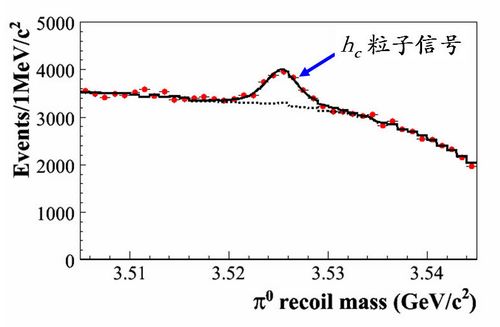First Important Physics Results from BEPCII Acquired
Dr. Yifang WANG, Spokesman of the new Beijing Spectrometer (BESIII) International Collaboration, announced on February 3rd, 2010 that the BESIII Collaboration achieved its
 |
|
the h_c signal from BESIII data |
It is worth noting that the Collaboration decided to submit its first article to Chinese Physics C and to continue to contribute part of its important research results to Chinese journals in order to help raise their international influence.
Since its official running, BESIII has accumulated 100 million ψ’ and 200 million J/ψ events. Those are the world's largest data samples of its kind, the first results of which, through accurate calibration, complicated simulation and analysis, can be concluded as follows:
1) Reconfirmed the strong proton-antiproton mass threshold enhancement in J/ψ decays first observed by BESIII. With the new data accumulated, the phenominon was reconfirmed and its structure could be intepreted as a new particle - a baryonium X(1860).
2) The branching ratio for psi' to pi^0 h_c, the branching ratio for the E1 transition h_c to gamma eta_c and the hc width were determined for the first time in the production and decay of h_c in psi' decays, which is essential to better understanding of charmonium physics.
3) Improved measurements of the branching fractions of $\chi_{c0,2}\to\pi^0\pi^0$ and $\chi_{c0,2}\to\eta\eta$. Knowledge gained from the measurements provides information on both the $\chi_{cJ}$ parents and their pseudo-scalar daughters, as well as on greater understanding of the decay mechanisms of $\chi_{cJ}$ mesons.
The above speedy BESIII physics results have benefited from the high quality and reliable operation of BEPCII/BESIII, the efficient operation of its large-scale data handling system and the successful running of the Collaboration. Further efforts will be made to produce more important results.